Jean-Claude Carreno and the sabre tooth tiger bones

By Jean-Claude Carreno Aged 13 years
In the north of Spain just south of the Pyrenees, limestone rocks were found, perfect for cement. But as they were excavating the limestone from the area, one of the diggers found bones of a sabre-tooth tiger. So they sent in some archaeologists to investigate, along with a film crew and Kensington school to try finding more bones, and they did, hundreds more. But the mystery was, they found many more predator than prey bones. So they came up with three basic theories.
The Theories: Usually there is one predator to twenty prey, so that there
is enough food for the predators. But in this area there was one predator to
every three prey. Here are the theories that may explain this mystery:
1. Death trap theory:
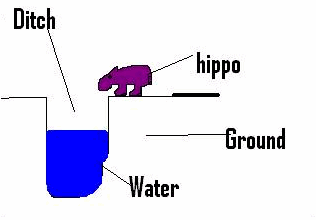 |
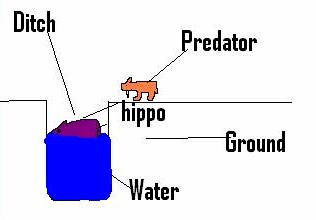 |
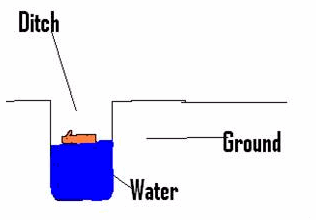 |
Basically this theory is: A hippo sees water in a low hole and goes for a drink, but falls in, and can't get out because the walls are too steep. Then the predator comes along and sees an easy meal, so jumps in and eats the hippo. It then gets stuck inside the hole and dies. And its bones are left at the bottom of the hole, and when the water dries up, its left there. But this means there also has to be predator bones there.
2. Flood in Theory:
In this theory the animals die around the edge of the water holes, and when it
rains floods wash the bones inside the hole.
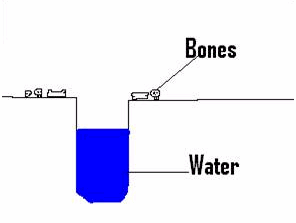 |
 |
3. Den Theory:
The final theory is that predators made there own den where they bred and lived.
The tigers might have also died in this den. But for this theory to work there
must be both young and old bones inside.
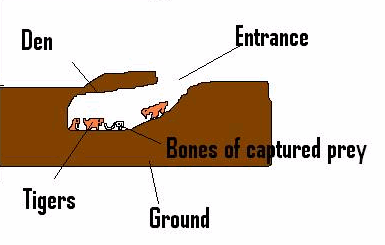 |
But which theory is correct? Many things were found during this dig, and some support the theories, some contradict the theories.
Evidence for theory 1: death trap
Good evidence:
The evidence that supports this theory is: water snails fossils were found,
which proves that water was once there, also, some of the bones were found
intact and close together which also supports this theory.
Bad evidence:
More predator bones than prey bones were found, contradicting the theory because
for each prey skeleton, there has to be a predator skeleton. There can't be
more predators than prey.
Evidence for theory 2: flood-in
Good evidence:
Once again the water snail fossil was found which also supports this theory,
because there has to be water for a flood-in. Also at the time there were many
floods which would of course wash in bones.
Evidence for theory 3: Den theory
Good evidence:
Hundreds of predator bones were found, so there were obviously many predators in
one place. One of the archeologists went to the Barcelona zoo and asked an
expert, Mauricio Anton, if the tigers would have dug there own den. Mauricio
told him it was possible, and tigers sometimes do that. Gnaw marks were found on
the bones, meaning that tigers clearly eat their dinner in the hole at some
time.
Bad evidence:
No bones of baby tigers were found in the den. A den has to have all types of
different aged tiger bones in there, or else it just can't be a den.
But which theory is correct?
Conclusion:
In a way all theories could have happened in different periods of times, but the
most likely one is the flood-in theory, because there is hardly any evidence
against it, and it's a very practical theory. The animal bones could certainly
be washed in by water, as it was the period of time when the ice age was ending.
The Geography side to the story:
They also found a cave in the area at Serinyà. This is a deep cave with water
marks in it, and helps explain how the holes were made.
Rainwater is naturally acidic and dissolves limestone to form underground
caverns. Eventually the cavern will become too large and the roof above would
cave in.
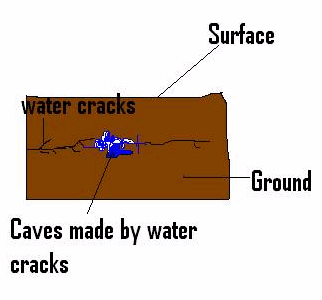 |
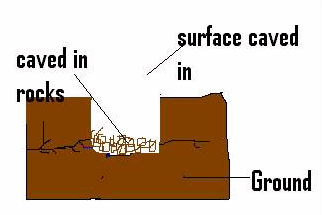 |
And that is the story of the Big Dig in Besalú, near Barcelona, northern Spain.
By: Jean-Claude Carreno
